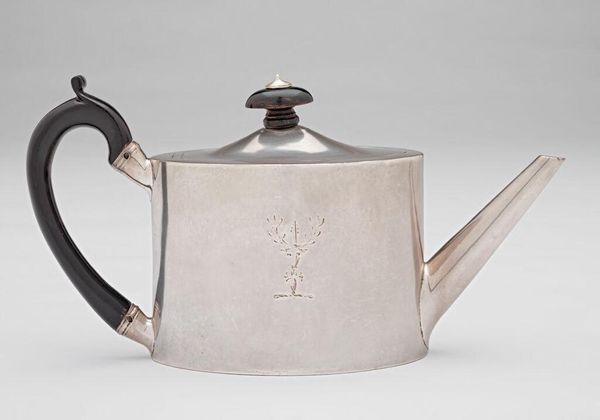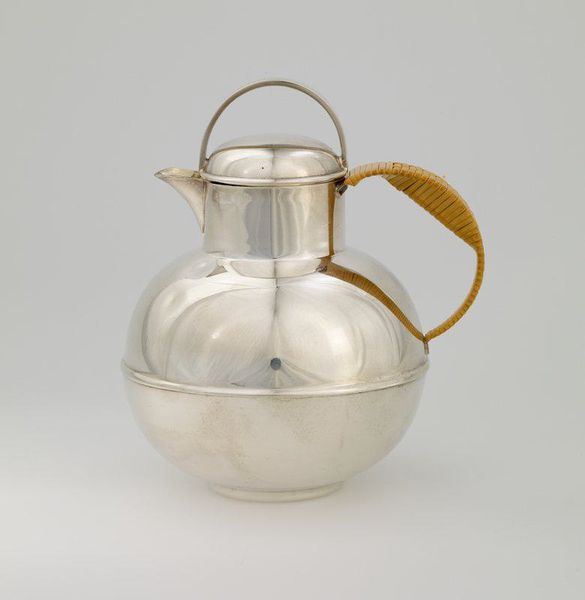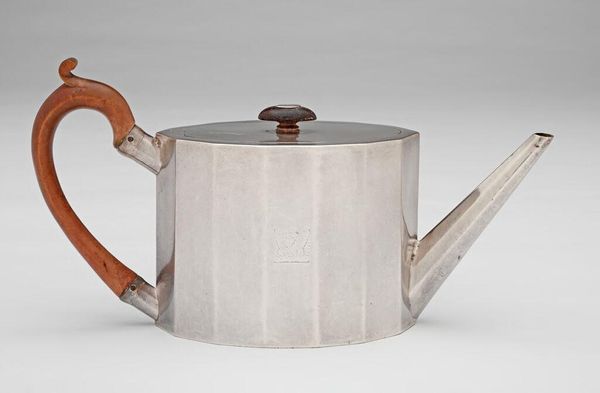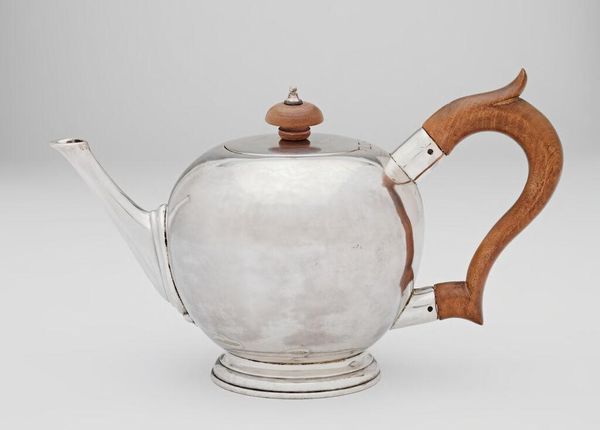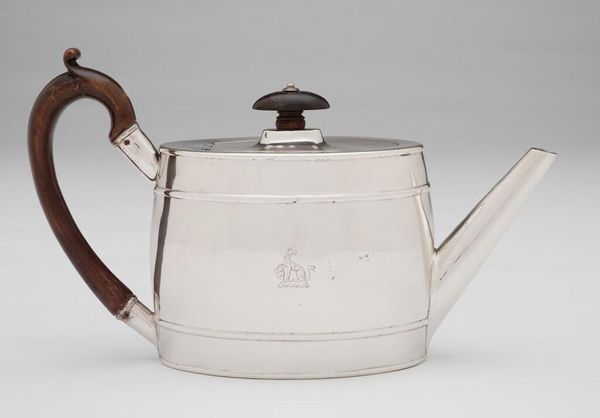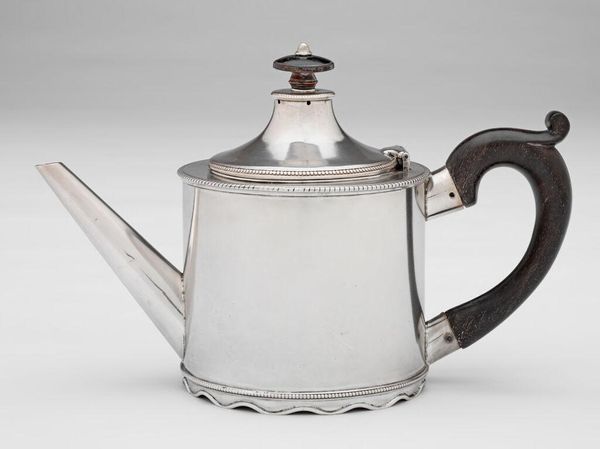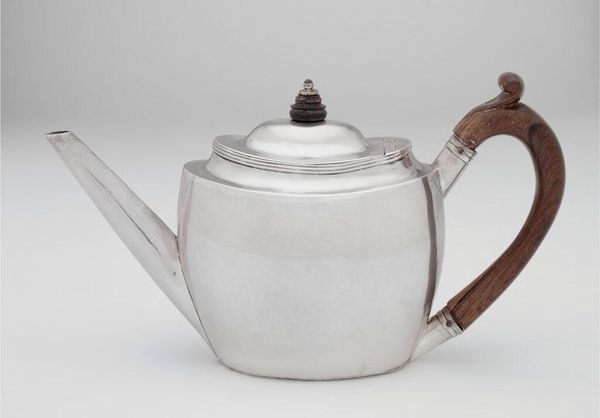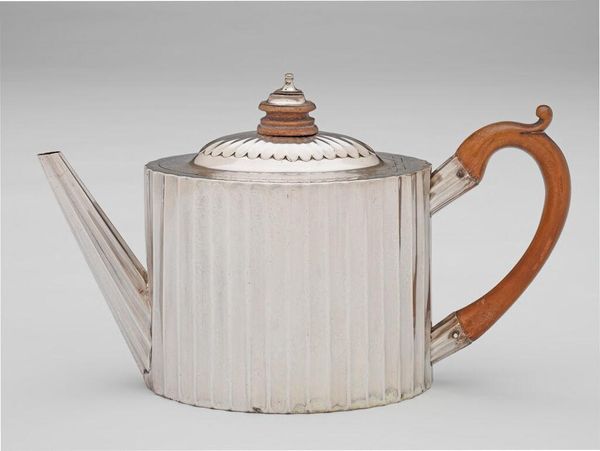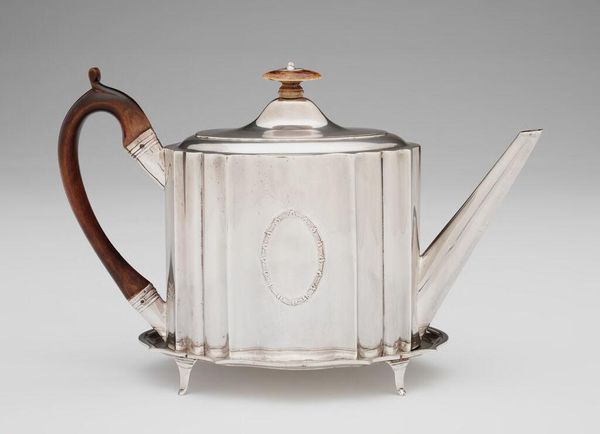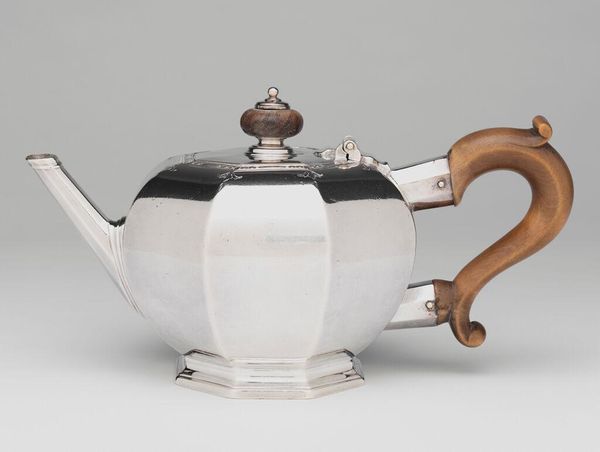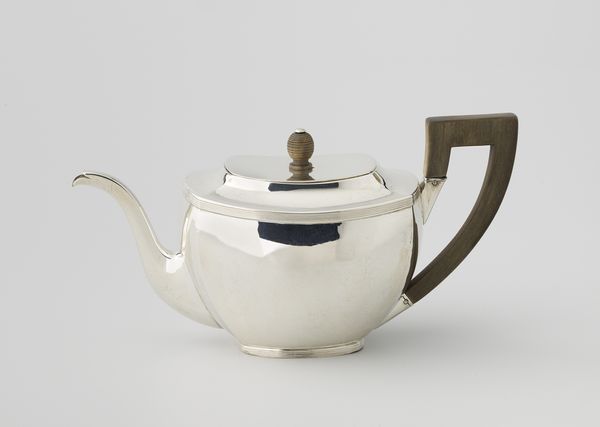
Dimensions: 12.4 x 25.4 x 9.6 cm (4 7/8 x 10 x 3 3/4 in.) unspecified: 449 g
Copyright: CC0 1.0
Editor: Here we have a teapot by James Young, who lived from 1760 to 1793. The materials are listed as unspecified, and it resides at the Harvard Art Museums. What strikes me is the angular design, especially for a teapot. What can you tell me about it? Curator: Well, teapots like these were important symbols. This piece reflects the rising importance of tea in 18th-century British society, linked to colonial trade. Tea became a ritual, signifying status and refinement, and objects like this teapot acted as markers of cultural identity. Do you think the geometric design challenges or upholds that sense of status? Editor: I think it challenges it, maybe. It's so different from the curvy, ornate teapots I've seen. I guess its simplicity could also be seen as elegant. Curator: Precisely! Its restrained design could signal a more modern, sophisticated taste, contrasting with overtly decorative styles popular at the time. The object’s cultural value lies in its ability to negotiate changing social and aesthetic norms. Editor: That’s a great way to look at it. I never considered how something as simple as a teapot could reflect broader cultural shifts.
Comments
No comments
Be the first to comment and join the conversation on the ultimate creative platform.
